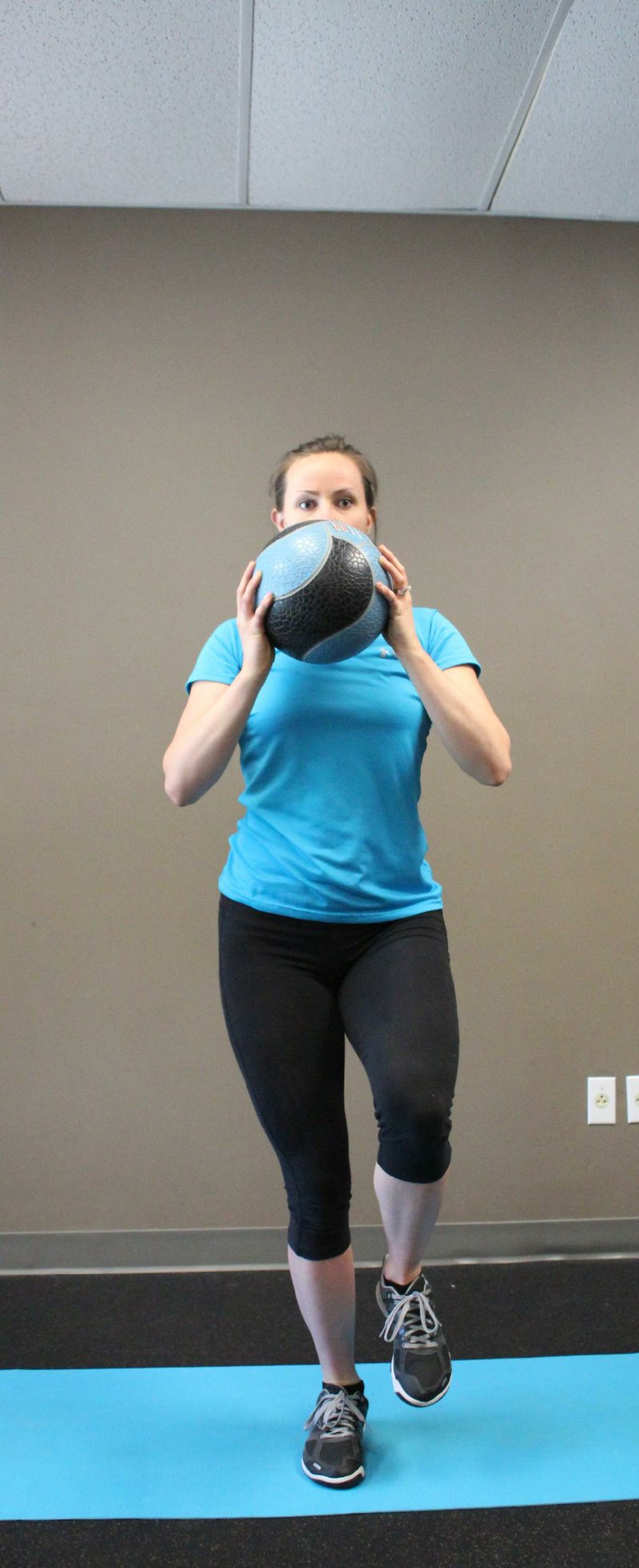Medicine ball training can be an entertaining way to strengthen the core muscles.
This week, I'll discuss the various types of medicine balls and how to employ them in workouts. In addition, I'll introduce a plyometric exercise that uses a ball.
Medicine balls come in a plethora of materials and almost any size and weight combination you can think of. Whether you're looking for one the size and weight of a snow globe or you want a 100-pound behemoth, there's a medicine ball that's right for you.
The most common materials used are plastic, rubber and leather.
The leather coverings are less prevalent than they used to be, probably because they are much more expensive to produce. But leather medicine balls are fantastic for exercises that involve smashing the ball against a floor or wall. In these instances, a bouncy ball is usually more trouble than it's worth because the user can't control it. Plus, the flexibility of the leather covering makes these balls a little less irritating when held against the body.
Exercises that incorporate rolling or bouncing the medicine ball are much easier with the rubber or plastic options. These medicine balls are less likely to burst their seams than the leather ones and will roll just like a basketball or soccer ball. In addition, they can be tossed against the floor or wall with a little bounce-back, and sometimes you want that. They're great for use with a trampoline rebounder, for instance.
One of the newest developments in medicine balls is the insanely heavy yet durable ball. These have thick rubber coverings that prevent them from being damaged when tossed or thrown. In the past, heavier medicine balls always had structural integrity issues that made them less than appealing. Newer composite materials have made the coverings far more durable, which has allowed certain manufacturers to create medicine balls that weigh as much as 150 pounds.
Extremely heavy medicine balls (more than 50 pounds) should only be used by very strong individuals looking to take their workout to the next level. Most people should steer clear of them. Avoid them entirely unless you're one of the strongest people in your fitness center.
This week's exercise is designed around the use of a light- or medium-weight medicine ball made of any material. The Single Leg Hop Press is a plyometric and cardiovascular exercise that will challenge the shoulders as well as the lower body. (Plyometric movements involve contracting the muscles before jumping.)
1. Select a ball and stand with your feet shoulder width apart.
2. Lift your left foot off the floor so you're balancing on the right foot.
3. Bend the right knee slightly.
4. Quickly straighten (extend) the knee and press your toes off the floor so you perform a small hop. As you hop, also extend the medicine ball over your head with both hands.
5. Lower the ball as you return to the floor.
6. Quickly go right into the next hop. Continue this pattern for 12 repetitions.
7. Switch legs and repeat.
This exercise is a fantastic way to increase your heart rate during strength training. I like to do this type of movement between more traditional exercises such as squats or biceps curls. This allows the heart rate to stay elevated throughout the workout, maximizing caloric expenditure.
Matt Parrott has a doctorate in education (sport studies) and a master's in kinesiology and is certified by the American College of Sports Medicine.
ActiveStyle on 04/27/2015

